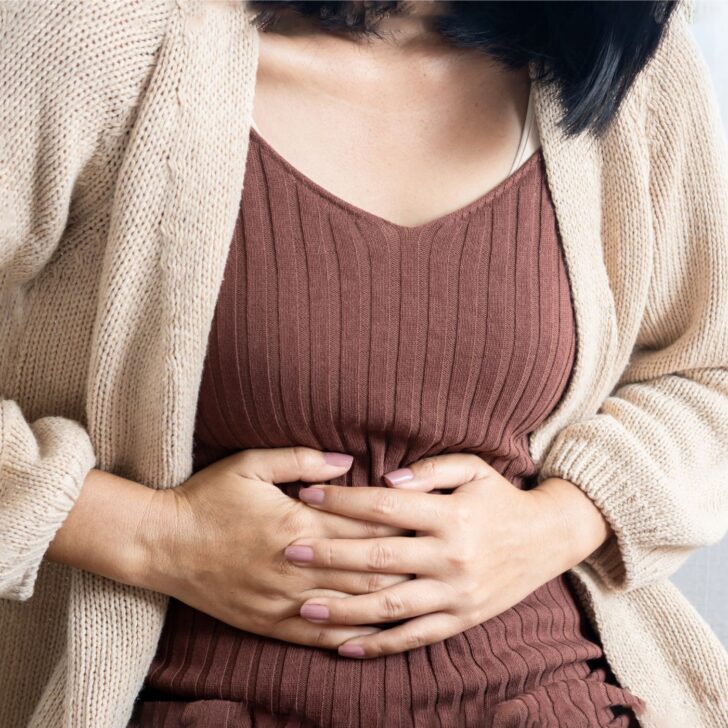Are you experiencing unexplained weight gain, mood swings, or persistent fatigue? These could be estrogen dominance symptoms, a common but often overlooked hormonal imbalance. Estrogen dominance occurs when the body has too much estrogen relative to progesterone, leading to a variety of physical and emotional symptoms that can significantly impact your daily life. Understanding these symptoms is the first step toward achieving hormonal balance and improving your overall well-being.
In this article, we will uncover seven surprising signs of estrogen dominance that you need to know. By recognizing these symptoms early, you can take proactive steps to address the imbalance through natural remedies, lifestyle changes, and dietary adjustments. Whether you’re already familiar with hormone health or just beginning your journey, this guide will provide valuable insights to help you navigate and manage estrogen dominance effectively.
From my own experience, I understand just how challenging and confusing it can be to deal with the symptoms of estrogen dominance. For years, I struggled with persistent fatigue and severe mood swings, not realizing that these issues were tied to my hormonal imbalance. It wasn’t until I started tracking my symptoms and making specific lifestyle changes that I began to see improvements. Sharing these insights and strategies has become a passion of mine, and I hope this article can help you find the clarity and relief I eventually achieved. Let’s dive into these unexpected signs and explore how they might be affecting you.
Table of Contents
What is Estrogen Dominance?
Estrogen dominance is characterized by an excessive amount of estrogen compared to progesterone. This imbalance, often referred to as high estrogen, can disrupt normal hormonal functions in the body, leading to various symptoms and health issues.
Estrogen and progesterone are the two main hormones regulating women’s reproductive health. When these hormones are balanced, they work together harmoniously to ensure proper bodily functions. However, when estrogen levels become too high relative to progesterone, several issues can arise.

Symptoms of Estrogen Dominance
Women experiencing estrogen dominance manifest a range of symptoms that can significantly impact both physical and emotional well-being. Recognizing these symptoms early is crucial for managing the condition effectively. Key symptoms include:
- Menstrual Irregularities: Heavy periods, irregular cycles, and severe PMS.
- Weight Gain: Especially around the hips, waist, and thighs.
- Mood Swings: Increased anxiety, depression, and irritability.
- Fatigue: Persistent tiredness and low energy levels.
- Breast Tenderness: Painful or swollen breasts.
- Fibroids: Non-cancerous growths in the uterus causing heavy bleeding and pelvic pain.
- Endometriosis: Growth of uterine tissue outside the uterus, leading to painful periods and potential infertility.
Estrogen production can lead to an imbalance, causing symptoms such as mood swings, irritability, insomnia, weight gain in specific body areas, increased risk of health conditions, fatigue, memory issues, low libido, and fertility problems.
Causes of Estrogen Dominance
Several factors can contribute to estrogen dominance:
Dietary Factors
Your diet plays a crucial role in hormone regulation. Certain dietary habits can increase estrogen levels:
- High Intake of Processed Foods: Contain additives and preservatives that can disrupt hormonal balance.
- Excess Sugar Consumption: Leads to weight gain and insulin resistance, both of which can increase estrogen levels. Excess fat cells can produce more estrogen, contributing to estrogen dominance.
- Low Fiber Diet: Fiber helps the body eliminate excess estrogen. A diet low in fiber can lead to the reabsorption of estrogen in the intestines.
Environmental Toxins
Exposure to environmental toxins, known as xenoestrogens, can mimic estrogen in the body and contribute to estrogen dominance. These toxins can affect estrogen receptors, disrupting hormone balance and leading to various health issues. Common sources of these toxins include:
- Plastics: Bisphenol A (BPA) and phthalates found in plastic containers.
- Pesticides: Chemicals used in agriculture.
- Personal Care Products: Many cosmetics and skincare products contain parabens and other chemicals that act as endocrine disruptors. Check the Skin Deep Database to see if your products are safe.
Chronic Stress
Chronic stress has a significant impact on hormonal balance. Elevated cortisol levels can suppress progesterone production, leading to an imbalance between estrogen and progesterone.
Poor Liver Function
The liver is responsible for metabolizing and excreting excess estrogen. Poor liver function can lead to a buildup of estrogen in the body.
High Body Fat Percentage and Weight Gain
High body fat percentage and weight gain are significant contributors to estrogen dominance because fat tissue produces estrogen. Excess body fat, particularly around the hips, waist, and thighs, can lead to an overproduction of estrogen, exacerbating the hormonal imbalance. Maintaining a healthy weight through diet and regular exercise is crucial for keeping estrogen levels in check and preventing estrogen dominance.
Diagnosing Estrogen Dominance at Home
Hormone imbalance, particularly estrogen dominance, can be accurately diagnosed by reviewing medical history, evaluating symptoms, and conducting specific tests. However, you can start with some at-home steps:
Symptom Tracking
Keeping a detailed diary of your symptoms can help identify patterns and potential triggers. Key symptoms to monitor include menstrual irregularities, mood changes, and physical symptoms like fatigue and breast tenderness.
Tracking your menstrual cycle is crucial to identify patterns related to estrogen dominance, which can lead to symptoms such as migraines, breast tenderness, low sex drive, irregular periods, and heavy menstruation.
Lifestyle and Environmental Factors
Assess your diet, exposure to environmental toxins, stress levels, and physical activity. Adjust these factors to support hormonal balance.
DIY Hormone Testing Kits
At-home hormone testing kits can provide concrete data by measuring hormone levels through saliva or blood spot samples.
Evaluating Results and Symptoms
Compare your observations and test results to typical signs of estrogen dominance to understand your hormonal health better.
Natural Remedies for Estrogen Dominance
Managing estrogen dominance naturally involves dietary adjustments, herbal supplements, and lifestyle changes. By managing estrogen dominance, you can reduce the increased risk of various health conditions such as breast cancer, heart disease, thyroid issues, metabolic syndrome, diabetes, and fertility issues.

Dietary Adjustments
- Increase Fiber Intake: Fiber helps eliminate excess estrogen. Include vegetables, fruits, whole grains, legumes, and nuts in your diet.
- Incorporate Cruciferous Vegetables: These vegetables support estrogen metabolism in the liver. Examples include broccoli, cauliflower, Brussels sprouts, kale, and cabbage.
- Healthy Fats: Incorporate omega-3 fatty acids from fatty fish, flaxseeds, chia seeds, walnuts, and avocados.
- Reduce Sugar and Processed Foods: Limit sugary snacks, sodas, refined grains, and processed foods to help manage weight and insulin resistance.
Herbal Supplements
- Milk Thistle: Milk thistle promotes liver detoxification and regeneration.
- Dandelion Root: Dandelion root supports liver detoxification and reduces water retention.
- DIM (Diindolylmethane): DIM supports estrogen metabolism and helps balance hormone levels.
- Maca Root: Maca root is an adaptogen that supports hormonal balance.
Over-the-Counter Progesterone Cream
Progesterone cream helps increase progesterone levels, counteracting the effects of excess estrogen. Apply as directed on areas with thin skin like the inner arms, thighs, or abdomen.
Additional Supplements
- CoQ10 (Coenzyme Q10):CoQ10 is an antioxidant that supports cellular energy production and overall health.
- Benefits: Enhances cellular energy production, supports heart health, and improves overall vitality.
- Usage: Available in capsule or softgel form. Follow the dosage instructions on the product label.
- NAC (N-Acetyl Cysteine):NAC is a precursor to glutathione, a powerful antioxidant that supports liver detoxification.
- Benefits: Supports liver health, enhances detoxification processes, and reduces oxidative stress.
- Usage: Available in capsule or powder form. Follow the dosage instructions on the product label.
- Alpha-Lipoic Acid: Alpha-lipoic acid is a potent antioxidant that helps protect cells from oxidative damage and supports liver function.
- Benefits: Promotes liver health, improves insulin sensitivity, and reduces inflammation.
- Usage: Available in capsule or tablet form. Follow the dosage instructions on the product label.
Supporting Liver Health
The liver plays a critical role in metabolizing and eliminating excess estrogen from the body. Supporting liver health through diet and lifestyle changes is essential for managing estrogen dominance.

Dietary Tips for Liver Health
- Incorporate Detoxifying Foods: Include garlic, onions, leafy greens, beets, and citrus fruits in your diet to support liver detoxification.
- Stay Hydrated: Drink plenty of water and herbal teas like dandelion root tea to support liver function.
- Healthy Fats: Consume omega-3 fatty acids from sources like fatty fish, flaxseeds, and walnuts.
Lifestyle Changes
- Limit Alcohol and Toxins: Reduce alcohol consumption and avoid exposure to environmental toxins.
- Regular Exercise: Engage in regular physical activity to support liver health.
- Maintain a Healthy Weight: Follow a balanced diet and exercise regularly to maintain a healthy weight.
Exercise and Hormone Balance
Regular physical activity is crucial for maintaining hormonal balance and overall health.
Types of Exercise for Hormonal Balance
- Aerobic Exercise: Activities like walking, jogging, swimming, and cycling help reduce body fat and improve cardiovascular health.
- Strength Training: Weightlifting and resistance exercises build muscle, support metabolism, and enhance hormonal health.
- High-Intensity Interval Training (HIIT): HIIT efficiently burns fat and boosts metabolism in a shorter time frame.
- Mind-Body Exercises: Yoga, tai chi, and Pilates promote relaxation and stress reduction.

Practical Tips for Incorporating Exercise
Set realistic goals, find activities you enjoy, make exercise social, schedule workouts, and listen to your body.
Preventing Estrogen Dominance
Prevention is key to managing estrogen dominance and maintaining overall hormonal health. Adopting a proactive approach can reduce the risk of developing estrogen dominance.

Lifestyle Choices
- Manage Stress Effectively: Engage in mindfulness practices, regular exercise, and ensure adequate sleep to manage stress.
- Avoid Environmental Toxins: Use glass or stainless steel containers, choose natural personal care products, and select organic foods.
- Maintain a Healthy Weight: Follow a balanced diet and exercise regularly.
Dietary Habits
Increase fiber intake, consume cruciferous vegetables, incorporate healthy fats, and limit sugar and processed foods.
- Regular Health Monitoring: Schedule regular check-ups and self-monitor symptoms to detect hormonal imbalances early.
- Natural Supplements: Consider supplements like DIM, milk thistle, and maca root to support hormonal balance.
Final Thoughts
Addressing estrogen dominance requires a holistic approach that combines dietary adjustments, lifestyle changes, and natural supplements. By understanding the causes and symptoms of this hormonal imbalance, you can take proactive steps to manage and prevent it. Incorporating fiber-rich foods, cruciferous vegetables, and healthy fats into your diet, along with reducing exposure to environmental toxins and managing stress, can significantly improve your hormonal health. Additionally, natural supplements like CoQ10, NAC, and alpha-lipoic acid can support your body’s detoxification processes and enhance overall well-being.
Remember, maintaining hormonal balance is an ongoing journey that involves regular monitoring and adjustments to your daily habits. While natural remedies can be highly effective, it’s essential to consult with a healthcare provider to ensure that your approach is tailored to your specific needs. By making informed choices and prioritizing your health, you can alleviate the symptoms of estrogen dominance and enjoy a balanced, vibrant life.
* This post does not intended to diagnose, treat, or cure any medical condition.
**These statements have not been evaluated by the Food and Drug Administration.
